Marketing is the process businesses use to promote their products, services, or brand. It can have diverse objectives, from growing an audience to driving sales.
There are countless types of marketing. And the list only seems to grow longer as technology develops.
To help you understand your options, here are 20 of the most common types of marketing. We’ll share the benefits of each along with best practices and an example for using them.
B2B Marketing
Business-to-business (B2B) marketing refers to marketing strategies that target other businesses. It’s focused on generating leads and having them talk directly to a salesperson.
B2B purchases typically involve multiple people in the decision-making process. And the ultimate purchase price is often bigger when you’re dealing with other businesses vs. individual consumers.
These two factors mean the sales cycle can take longer. B2B customers spend more time in the awareness and interest/evaluation steps of the marketing funnel.
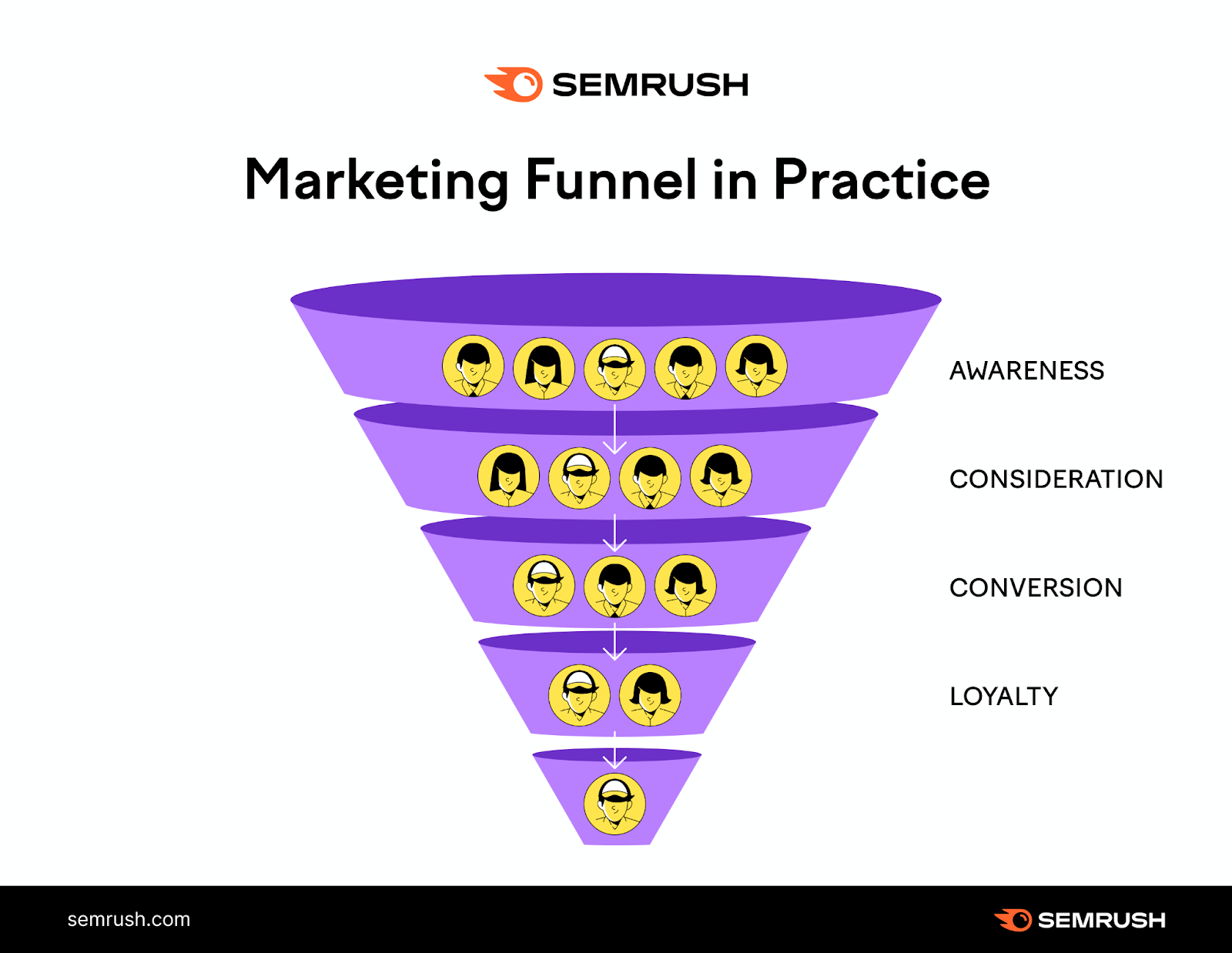
B2B marketing campaigns usually focus on attracting high-quality leads. They do this by getting their message in front of the right people and showcasing the benefits of their product or service.
A B2B retailer may engage with their audience on business-focused platforms (like LinkedIn) or trade shows.
It might also use content marketing online (like case studies) to increase brand awareness and show products or services in action.
For example, Mailchimp has used a video-based content marketing campaign hosted on YouTube to reach out to their audience. A series of videos titled “Success Stories” showcases how B2B customers used Mailchimp to grow their businesses.
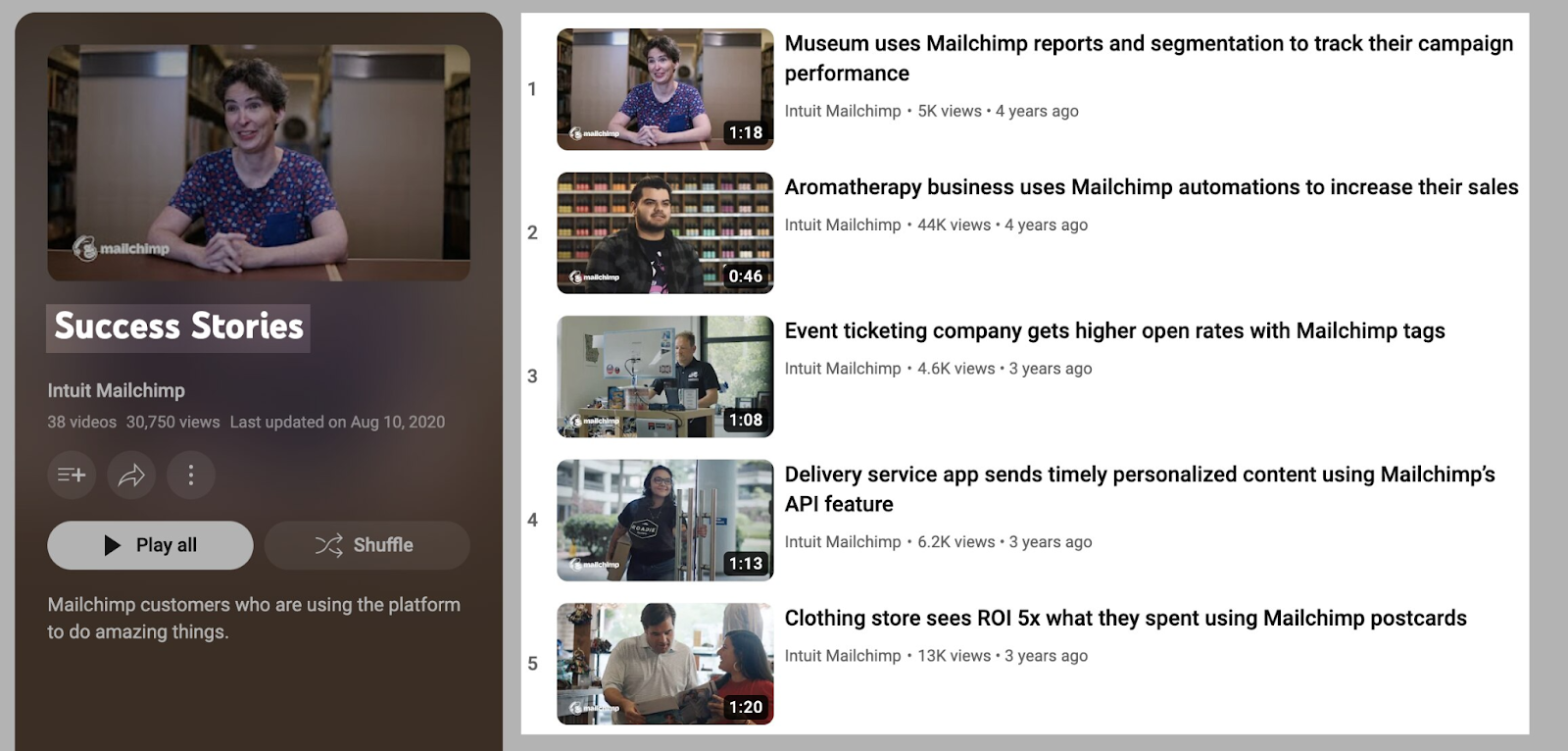
These videos target potential customers and demonstrate the value of the product. They also address potential customer questions, like whether it’s more difficult to use than their current system. Or whether the ROI is great enough to justify the cost.
With B2B marketing, sales reps help nurture potential new customers as they approach a purchase decision.
B2B Marketing Best Practices:
- Understand the B2B buying journey and tailor your marketing campaigns to nurture potential customers
- Use case studies, testimonials, and content marketing to showcase your brand’s quality
- Choose a mix of marketing channels that’s specifically suited to your B2B audience
Read more about B2B marketing in our Beginner’s Guide to B2B Content Marketing.
B2C Marketing
Business-to-consumer (B2C) marketing is the term used to describe marketing to individual consumers.
B2C targets the specific buying habits of individuals.
Using emotive language can help influence buying decisions. Take the messaging on Nike’s ecommerce store as an example.

The headline and intro copy both aim to incite an emotional response in the shopper. The goal of B2C marketing is to streamline the buyer’s journey. This means the key to success in B2C marketing is creating a positive association with the products or services you offer.
Tactics like influencer marketing, an engaging social media presence, and prominent customer reviews can boost B2C marketing efforts. They act as trust signals to your target audience.
The B2C sales cycle is also shorter than B2B. You can address this by creating content that proactively addresses customer questions or objections. This allows potential customers to make an informed decision as they consider their purchase.
B2C Marketing Best Practices:
- Create positive associations around your brand or product with social proof techniques
- Use emotive, outcome-focused language in advertising to spur users into action
- Build a trustworthy brand by leveraging review platforms and social media
Inbound Marketing
Inbound marketing attracts customers through tailored content or experiences. It’s also known as “pull” marketing because it’s designed to pull your audience in.
Inbound marketing relies on audience targeting. It identifies people who meet your ideal customer profile and tries to reach them with a tailored message across a variety of channels.
The Semrush blog is an example of inbound marketing. It’s filled with articles covering topics that marketers want to learn about.
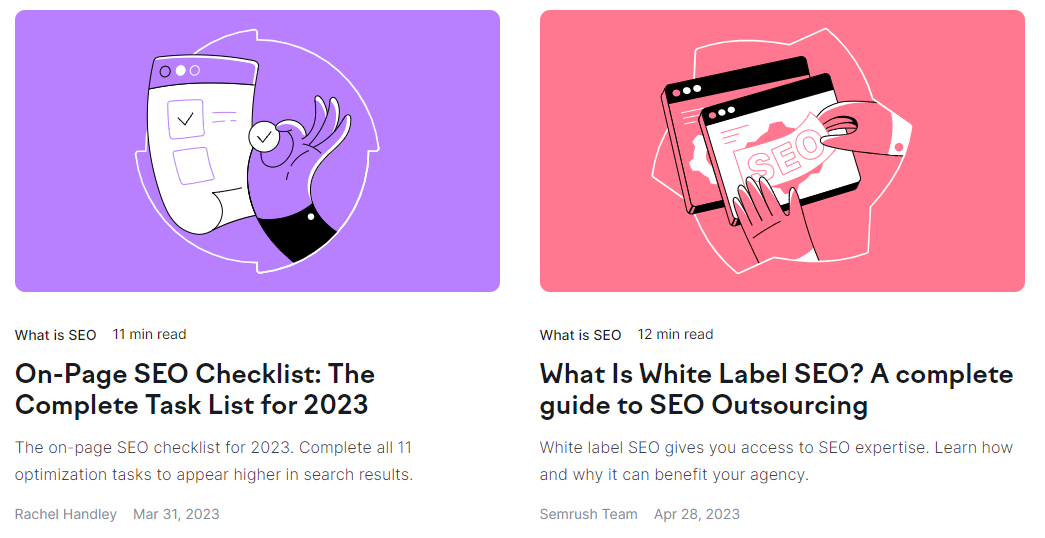
This inbound strategy “pulls” searchers to our website. After getting value from the article, they’re more likely to have a positive perception of Semrush and potentially buy our product.
The inbound marketing funnel involves three steps: attract, engage, and delight.
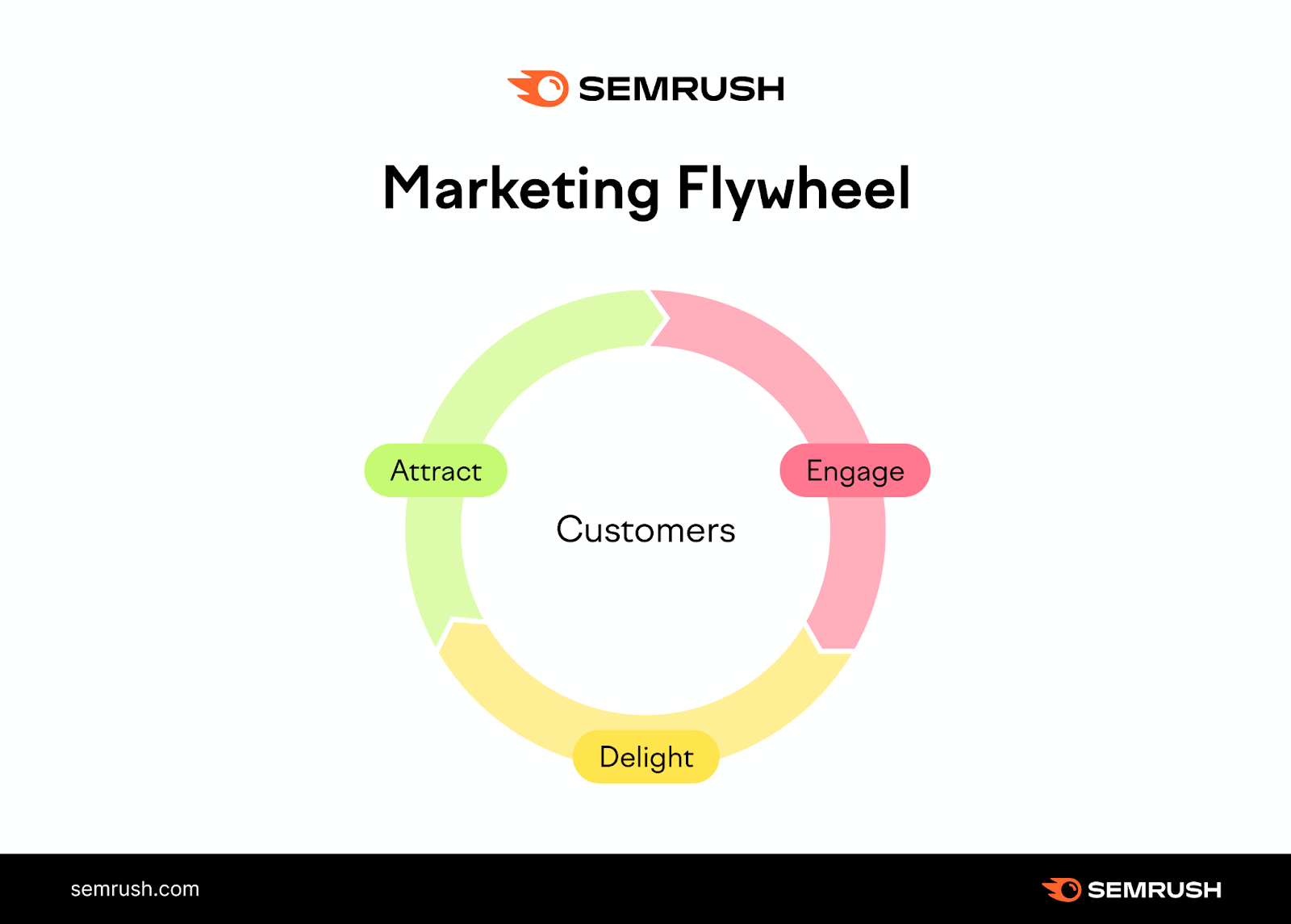
You first have to reach your audience and attract them to your business. You can then engage them with consistent messaging and spark delight through valuable resources or content.
Inbound Marketing Best Practices:
- Get to know your ideal customer through market research
- Use audience targeting to your advantage to maximize relevance and ROI
- Create multi-channel campaigns to attract, engage, and delight your audience
Further reading: What Is Inbound Marketing?
Outbound Marketing
Outbound marketing is a non-targeted approach where the company makes the first move.
In this scenario, you’re reaching out to build brand awareness or generate leads. This marketing style is interruptive; you’re targeting an audience who isn’t necessarily looking for a product or solution.
Your goal is to generate interest among potential buyers, so you’re casting a wide net to gain new customers.
Super Bowl ads are an example of outbound marketing. Every ad reaches a huge, demographically diverse audience. This offers great brand visibility, but comes at the cost of relevance.
Squarespace’s Super Bowl ad from 2023 exemplifies outbound marketing. The ad is simple and memorable. It explains what Squarespace does in basic terms, creating interest for viewers who relate to the needs the product meets.
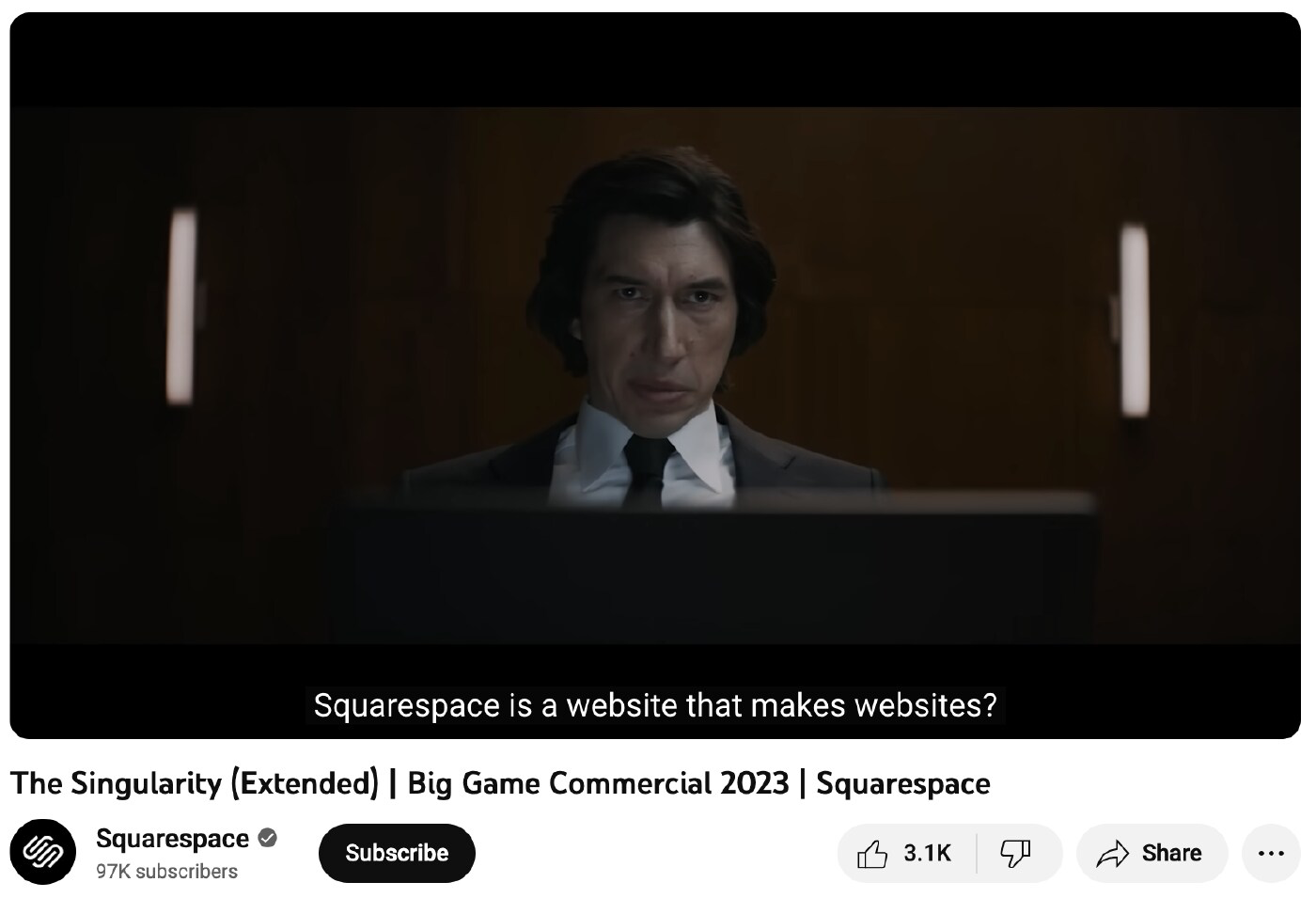
The core objective in an outbound campaign is to maximize reach with a broad-based, high-volume approach. It gets your product or service in front of more people than targeted inbound marketing.
From there, it’s a numbers game. The more people you reach, the more likely it is your message will resonate and lead to sales.
Common channels in outbound campaigns include print marketing, cold calling, direct mail, and other forms of traditional marketing.
Outbound Marketing Best Practices:
- Focus on maximizing reach, to cast as wide a net as possible
- Use simple messaging to ensure your proposition is easily understood
- Provide a clear next step for your audience to follow so you can activate their intent
Digital Marketing
Digital marketing is the use of online channels to reach and convert customers. Common channels include:
- Search engines
- Pay-per-click ad networks
- Social media platforms
Also known as online marketing, it’s one of the most popular forms for good reason. It offers access to a vast audience, with over 5 billion internet users across the world.
You can use paid and organic channels in tandem, mixing granular customer targeting with broad brand-building activities.
For instance, you could promote free tickets to an event you’re hosting on your Instagram page. You might also create paid Google Ads for the giveaway to get it in front of new audiences that match your buyer persona. This will raise awareness and encourage engagement with existing followers.
Digital Marketing Best Practices:
- Learn more about the different digital channels and choose the ones that suit your objectives
- Take advantage of the broad range of potential approaches, mixing paid, organic, inbound, and outbound strategies
- Use multimedia assets like images and videos to engage your audience
Read more about digital marketing in our guide on What Is Digital Marketing?
Search Engine Marketing
Search engine marketing (SEM) involves using strategies to increase your site’s visibility in search results pages (SERPs). It’s often referred to as pay-per-click (PPC) marketing, but can include other paid tactics as well.
It’s a versatile form of marketing because both B2C and B2B customers use search engines throughout their buying journey. That means you can target customers throughout the marketing funnel—from the initial awareness stage all the way to the moment they buy.
There are many PPC platforms, including search engines, social media sites, and more. The most popular is Google Ads.
These ads appear throughout SERPs, including at the top of the first page. The screenshot below shows two types of PPC ads on a Google SERP.
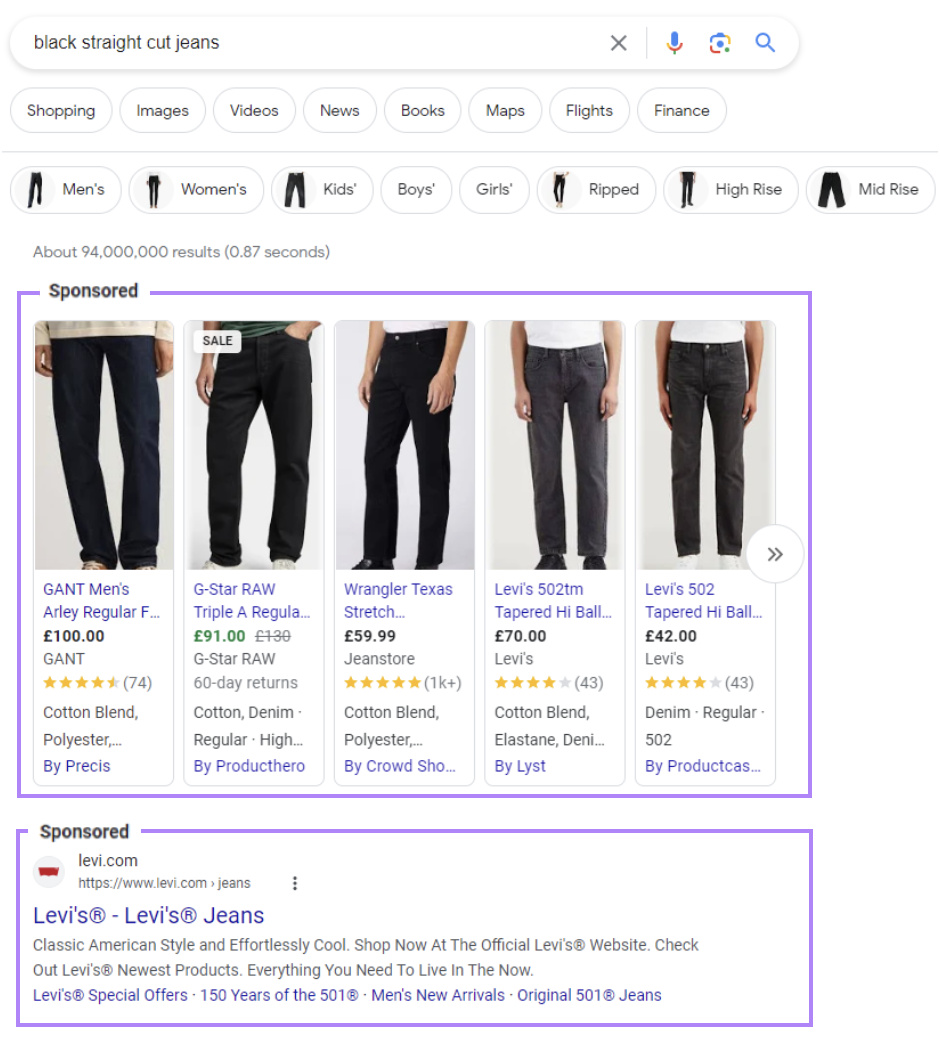
The first result is a shopping feed featuring brands like GANT, G-Star RAW, and Levi’s. The second is a Levi’s ad.
Each PPC platform operates differently, but the Semrush PPC Advertising Toolkit can help you get started.
The tools in the toolkit can help you learn which keywords you should target. They’ll also give you insights into where your competitors are running ads and what the messaging they’re using.
The Semrush Keyword Magic tool will help you find the right keywords to help you build a profitable campaign.
Start by entering a basic keyword. The tool will then generate a list of related words to consider using in your campaigns.
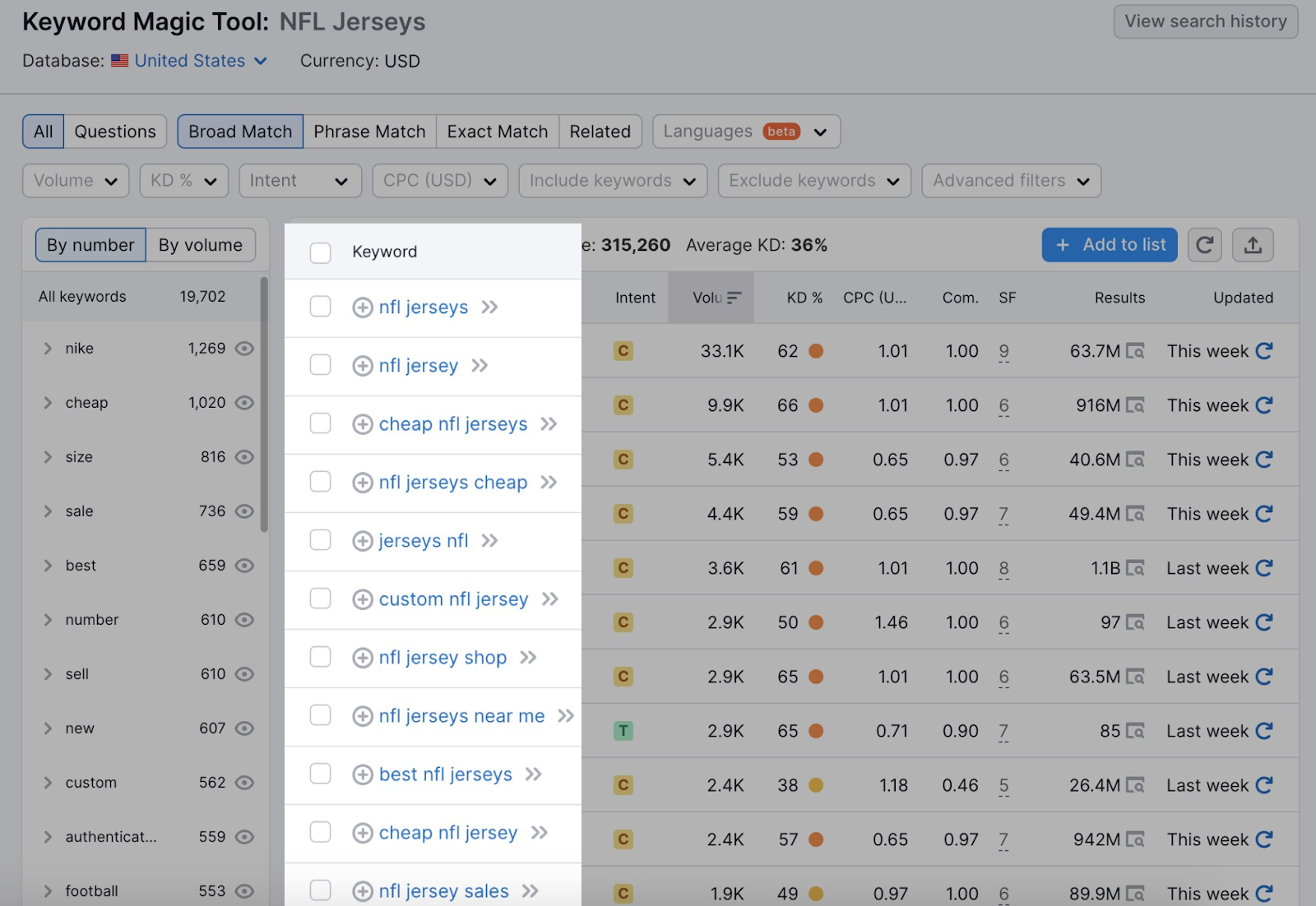
The Semrush Advertising Research tool will give you insights into what your competitors are doing.
This includes an overview of their strategy and an understanding of how much they’re spending on PPC. You’ll also be able to see how much traffic their efforts are generating.
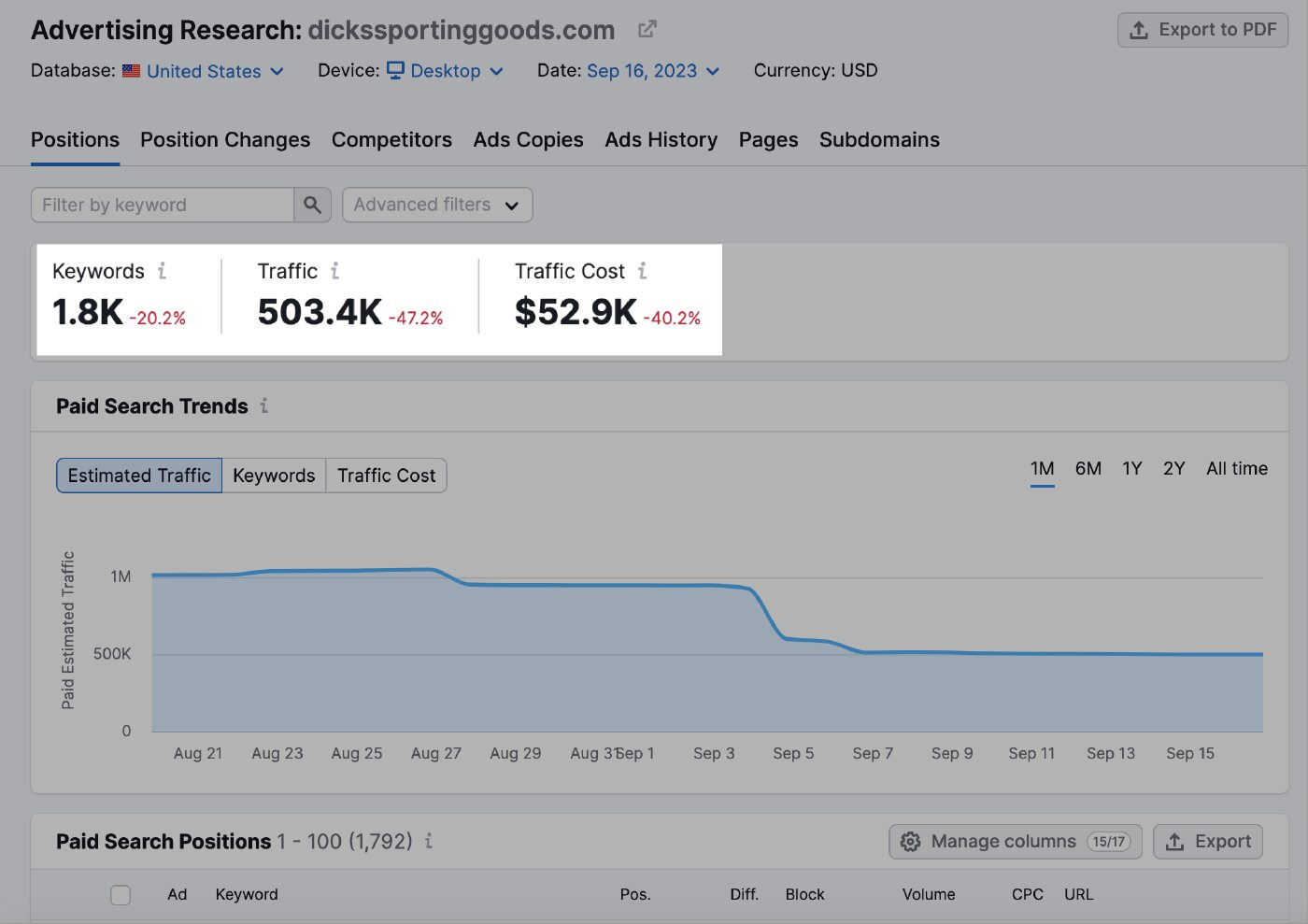
This information can help you set benchmarks for your own campaign.
Search Engine Marketing Best Practices:
- Combine organic and paid search engine marketing to build a short- and long-term pipeline
- Focus on mastering keyword research, using tools like Semrush, to reach your target audience
- Use search engine marketing throughout the funnel to nurture users towards a purchase decision
Content Marketing
Content marketing is the practice of creating and distributing content to grow, engage, and maintain your audience. A successful content marketing strategy increases your online visibility and authority.
You can use diverse types of content in content marketing campaigns, including:
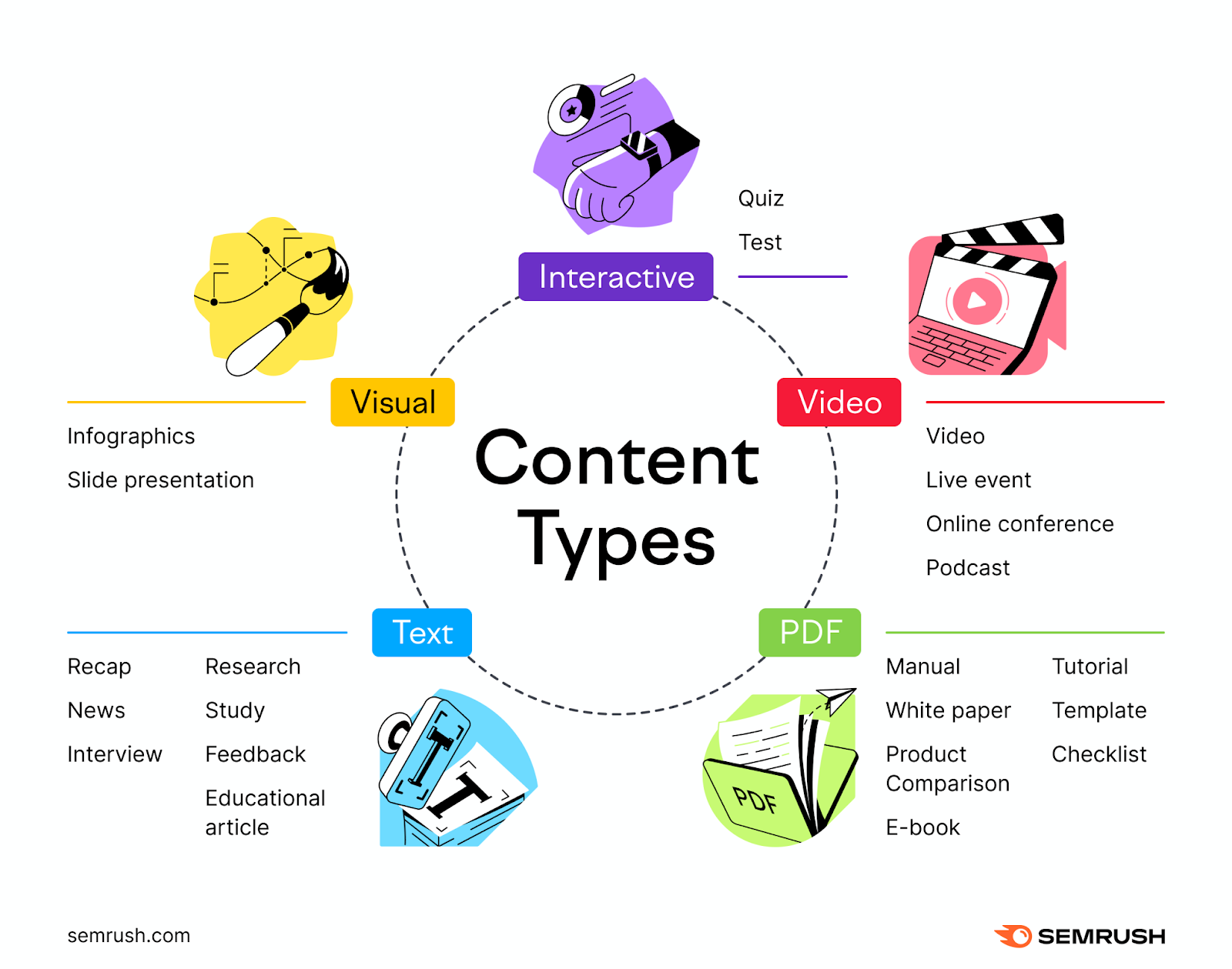
This variety makes it a versatile type of marketing. You can use it to target customers at any stage of the buying funnel.
It can drive brand awareness by helping you rank for informational keywords early in the buying journey. It can also generate leads by addressing customer objections towards the bottom of the funnel.
Spotify’s annual “Wrapped” campaign is a great example of content marketing. It engages current users, serving them personalized content.
It also encourages those users to share their “Wrapped” result, boosting the campaign’s reach and attracting new customers.
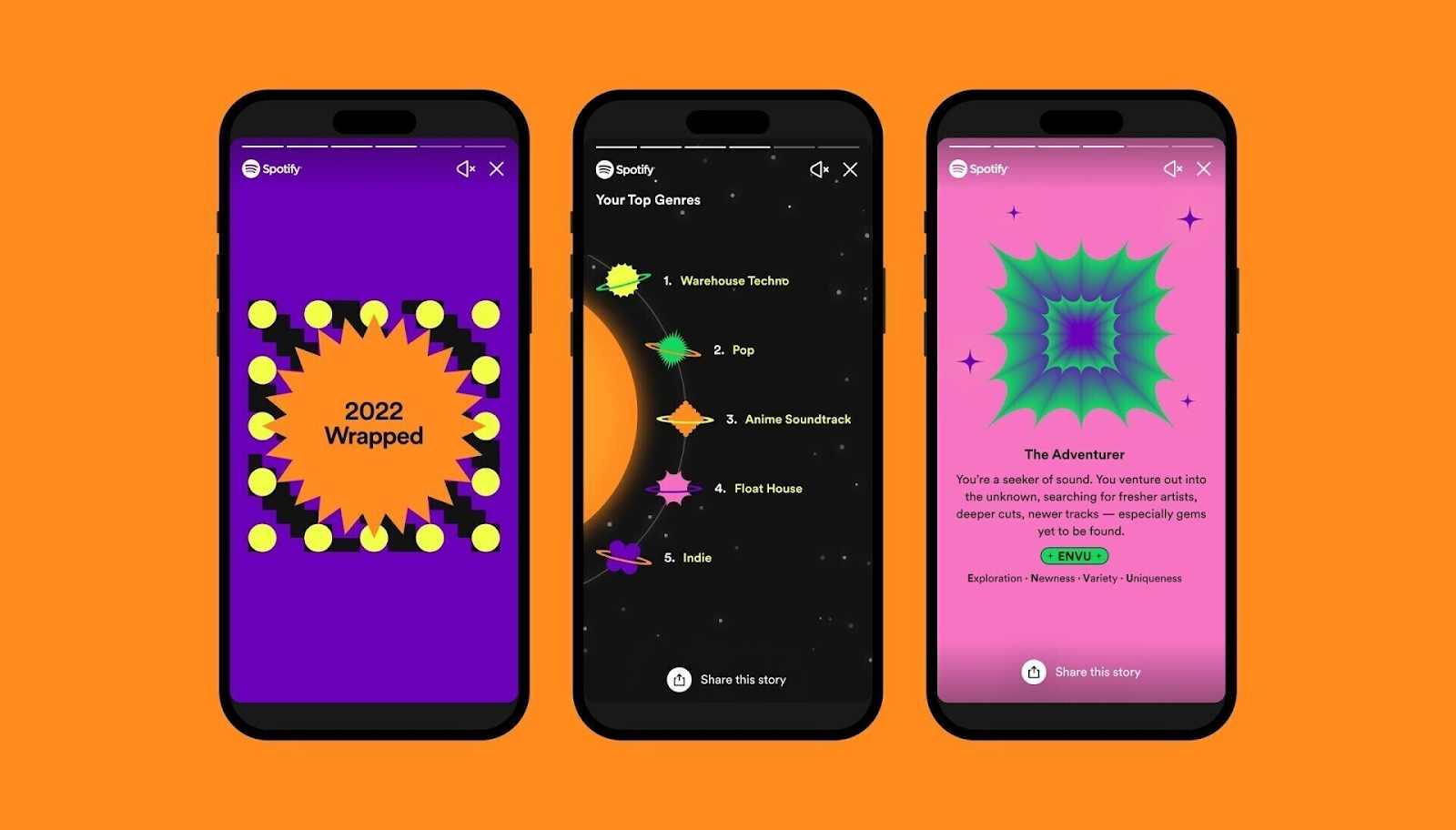
Spotify Wrapped is an inventive form of content marketing.
Content Marketing Best Practices:
- Decide on your objectives early, choosing from brand exposure, press coverage, or revenue generation
- Try out different types of content to see what works best
- Deploy content marketing as part of a multi-channel campaign to build a nurturing funnel
Further reading: What Is Content Marketing?
Social media marketing is the strategic use of social media platforms to connect and engage with your target audience. It’s also one of the most common types of digital marketing. Almost every brand, both B2B and B2C, has a presence on one or more social platforms.
There are both paid and organic strategies, with most social media sites having a PPC advertising platform built in.
Social media is a big opportunity for both brand-building and sales-focused marketing because it presents huge potential reach.
There are almost 5 billion social media users in the world, and that number is growing.

Any social media platform can be part of a marketing campaign. But the largest are generally the most popular. These include Facebook, Twitter, LinkedIn, and Instagram.
Innocent, the smoothie brand, shows how inventive social media marketing can be. Their Twitter feed is full of jokes, memes, and light-hearted product announcements.
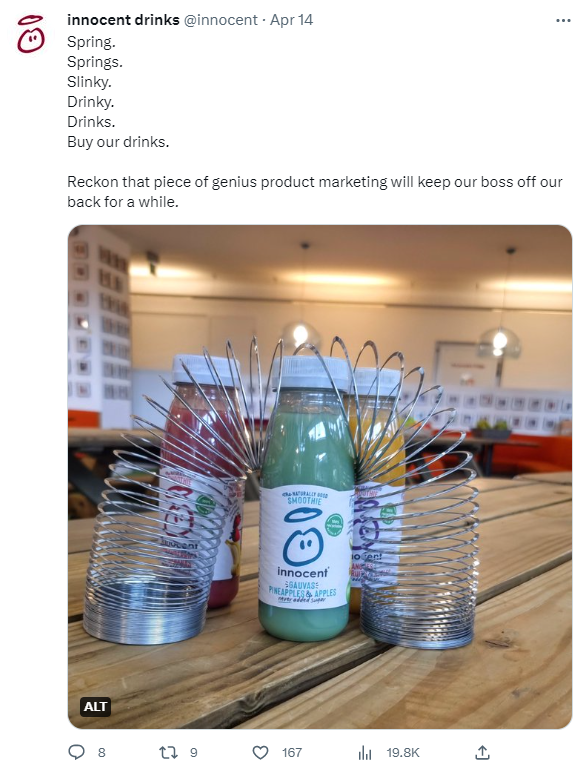
This strategy gets them plenty of attention. It’s anything but sales-focused, and part of their broader brand awareness campaign to grow their audience.
Social Media Marketing Best Practices:
- Make full use of the variety of social media platforms available to you
- Consider combining paid and organic social media marketing strategies
- Ensure that your brand positioning is consistent across all of your social accounts
Pro tip: Semrush Social can help you grow your visibility on social media platforms. Use it to create and share winning content across your profiles and analyze and evaluate your own and competitors’ social strategies.
Influencer Marketing
Influencer marketing is when businesses team up with people who have a large following online, usually on social media platforms.
Common examples of influencers include celebrities, athletes, and digital content creators.
Influencer marketing involves businesses compensating an influencer to promote their products or services.
It’s currently a $21+ billion industry, with influencers found across different kinds of marketing. And it’s still growing, as social media continues to attract new users and becomes more integrated with our daily life.
The social media post below shows what influencer marketing looks like in practice.
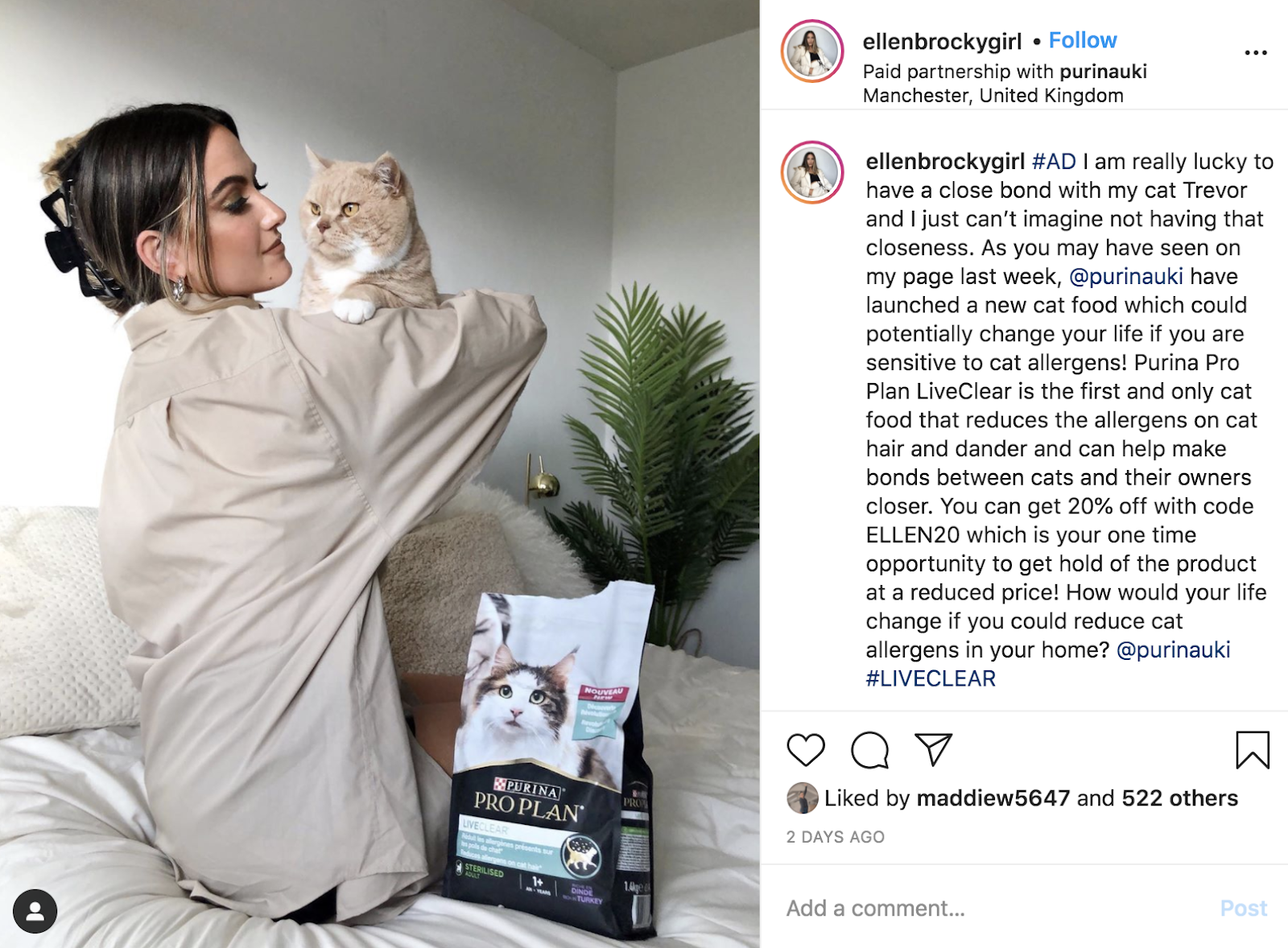
Regardless of the model used, the aim is typically to grow brand awareness or drive sales.
Influencer Marketing Best Practices:
- Research influencers in your sector to find individuals who fit well with your brand
- Choose a clear objective, like brand awareness or revenue growth
- Measure the ROI of your influencer marketing to compare to other channels
Read more in our guide on Influencer Marketing.
Email Marketing
Email marketing is a direct marketing channel that allows you to connect with customers on-one-on.
There are about 4.3 billion email users as of 2023, and that number grows every day.
Email marketing lets you communicate with these users. The direct nature of emails and the customizability of campaigns makes it a versatile form.
You can use it in brand awareness campaigns, to pass information on to users, or to drive sales.
The below Black Friday email from Bose shows puts a spotlight on a single product with a prominent customer review and clear details about the savings available.
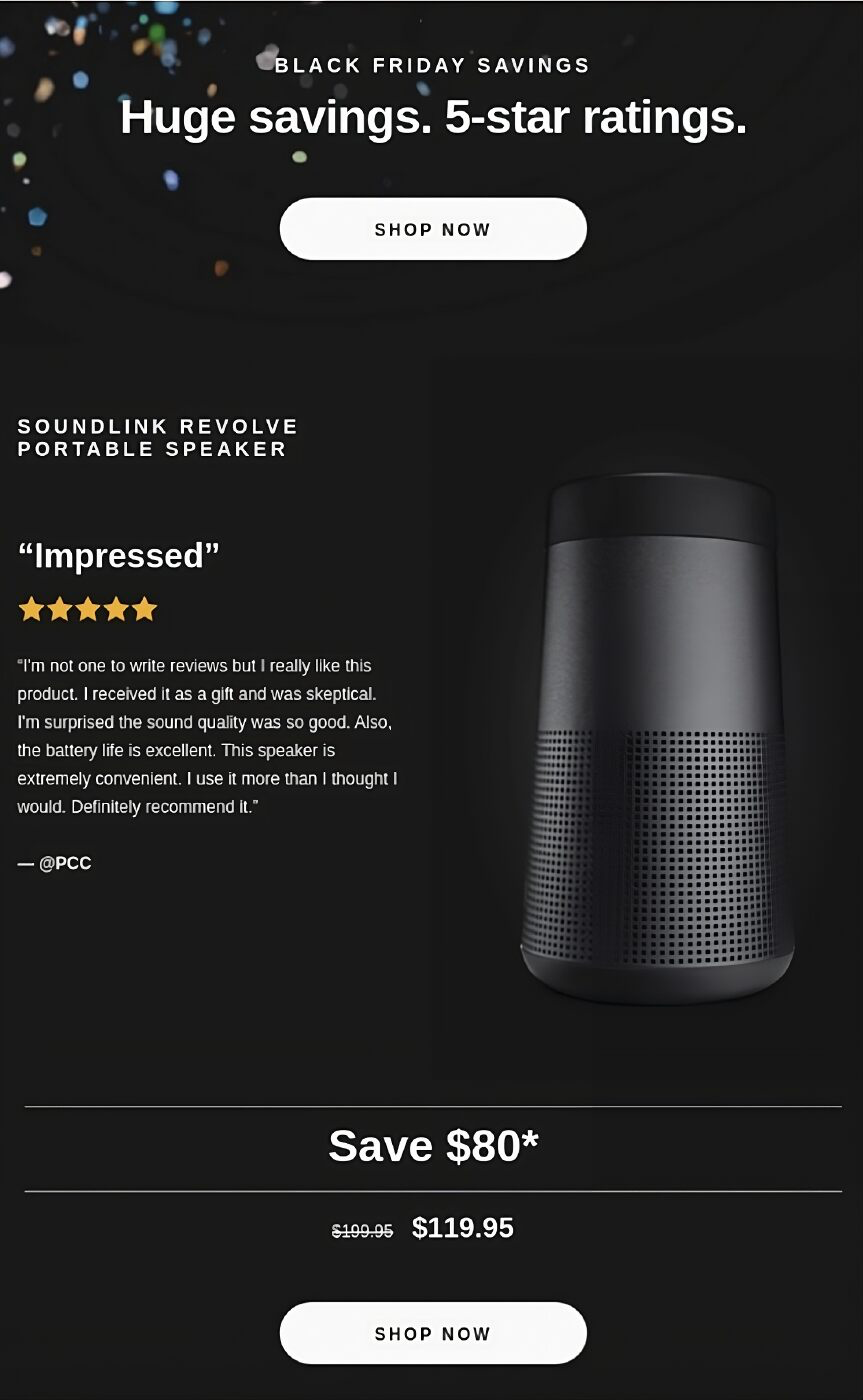
Email Marketing Best Practices:
- Aim to capture your audience’s email addresses through CTAs on your website
- Segment your audience to facilitate better email personalization and increase engagement
- Try different types of email campaigns, like newsletters, promotional offers, and customer reactivation
Read more about email marketing in our guide on How to Get Started with Email Marketing.
Video Marketing
Video marketing refers to the use of video assets as a marketing tool. Videos that promote or inform people about your offerings can help you reach, engage with, and convert your audience.
People are more likely to interact with videos than with text or image alone. That translates to a greater chance of keeping leads engaged with your brand and of leading them through your sales funnel.
When asked about content format types, 45% of respondents said video content performed best. 51% of people are more likely to share video with their friends than any other type of content.
You can share videos across a variety of digital channels, including video hosting sites, social media, and your own website.
Google uses its YouTube channel as a brand-building tool. They share annual “Year in Search” videos, summarizing the year’s search trends in an engaging way.

Social media platforms like TikTok and Instagram are also driving a new, shorter-form type of video marketing. They’re easy to make and share immediately.
Even non-video based platforms (like blogs) get a boost from video marketing. According to our latest research, articles with video generate 70% more organic traffic than those without.
It works throughout the funnel. Videos can push initial brand awareness and showcase specific products.
Video Marketing Best Practices:
- Try out both short- and long-form content across various platforms
- Use video content as part of your social media marketing strategy to capture attention
- Treat YouTube as a search engine and apply SEO techniques to increase your organic visibility
Viral Marketing
Viral marketing is a technique that revolves around encouraging people to share content. It typically refers to digital content and social media platforms.
Viral marketing is one of the most recent marketing tactics. It has grown in popularity with the rise of social media.
It offers a huge opportunity to businesses, because the reach of viral campaigns grows exponentially.
The potential return on investment (ROI) of a successful viral marketing campaign can be massive. But it’s not a reliable form of marketing. There’s no guaranteed method of creating viral content. Most viral success seems to happen by accident.
Oreo’s “Dunk in the Dark” tweet is a great viral marketing example. They posted it during the 2013 Super Bowl, when a power outage dropped the lights at the Mercedes Superdome.
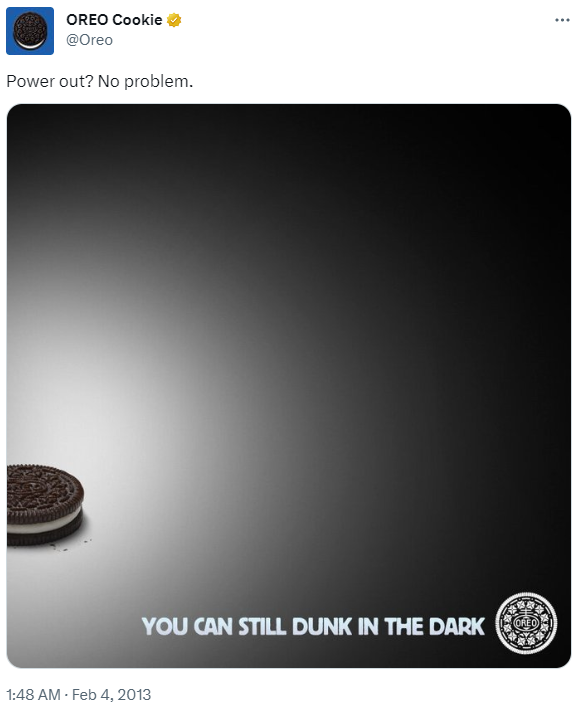
The tweet got lots of attention and is still referenced today. But there was no planning involved. Quick thinking from Oreo’s social media team created the viral moment.
Viral Marketing Best Practices:
- Don’t try too hard to go viral—you can’t force success
- Stay up to **** with trends in your sector to find viral opportunities to pounce on
- Be prepared to take risks in your marketing creative
Product Marketing
Product marketing involves leveraging a product as its own marketing tool.
It can be as simple as focusing marketing campaigns on the benefits or features of the product. You can also offer free trials or tiered pricing ****** and let the product market itself.
Successful product marketing relies on close product and marketing departments. This allows the two departments to share and improve on each others’ knowledge.
For example, marketers can feed insights on the target audience’s preferences into product development. And product managers can tell marketers when new features are ready to be announced.
It’s a popular approach with SaaS businesses. These companies operate in competitive markets where slight differences in product positioning can create a large competitive edge. Product marketing helps them differentiate themselves from competitors and attract customers.
Semrush, for example, offers a free platform with various price tiers. It also offers a free trial of its paid plans to help users get a feel for the product before committing.
Product Marketing Best Practices:
- Work towards bringing your product and marketing departments closer together
- Make use of free trials or a freemium pricing model to let your product do the talking
- Use product-related creative in marketing across all your marketing channels
Brand Marketing
Brand marketing revolves around building brand awareness and affinity with the target audience. It aims to raise brand reputation, which can result in more customers with higher loyalty.
It’s often rolled out as part of a multi-channel strategy. Each channel delivers a consistent brand message to the audience.
Say a fitness brand wants to build up their brand recognition. They might include images and videos of athletes using their products on social media. They might also partner with well-known influencers to get reviews of their products and publish blog posts on their site related to fitness topics.
These efforts all work together to get the brand in front of a bigger audience and establish itself as an authority in the field.
Key performance indicators (KPIs) can be difficult to track in brand marketing. As a result, most brand marketing campaigns run alongside product-focused campaigns. This approach fuels short-term revenue and long-term brand growth at the same time.
The Michelin Guide is a famous example of brand marketing. The project has almost nothing to do with Michelin’s products. But it raised their profile and helps them maintain brand relevance.

The guide is a well-known standard for distinguishing top-tier restaurants. And it has the bonus effect of associating Michelin’s name with quality and luxury.
Brand Marketing Best Practices:
- Think outside of the box—you can promote your brand in unlikely ways
- Keep your brand positioning and messaging consistent across channels
- Consider running product-focused campaigns alongside brand marketing to maintain short-term revenue
Read more about brand marketing in our guide on How to Build a Brand Identity.
Offline Marketing
Offline marketing is any form of marketing that takes place without the internet. It’s the opposite of digital marketing, and is often referred to as traditional marketing.
Offline marketing contains sub-types like print, direct, and word-of-mouth marketing. Popular offline channels include TV, billboards, and radio ads.
Offline marketing is primarily outbound. Offline channels lack the targeting capabilities of their digital counterparts. But they still offer significant potential reach.
For example, Statista found in a 2020 survey that more people recall seeing ads on TV than any other marketing channel.
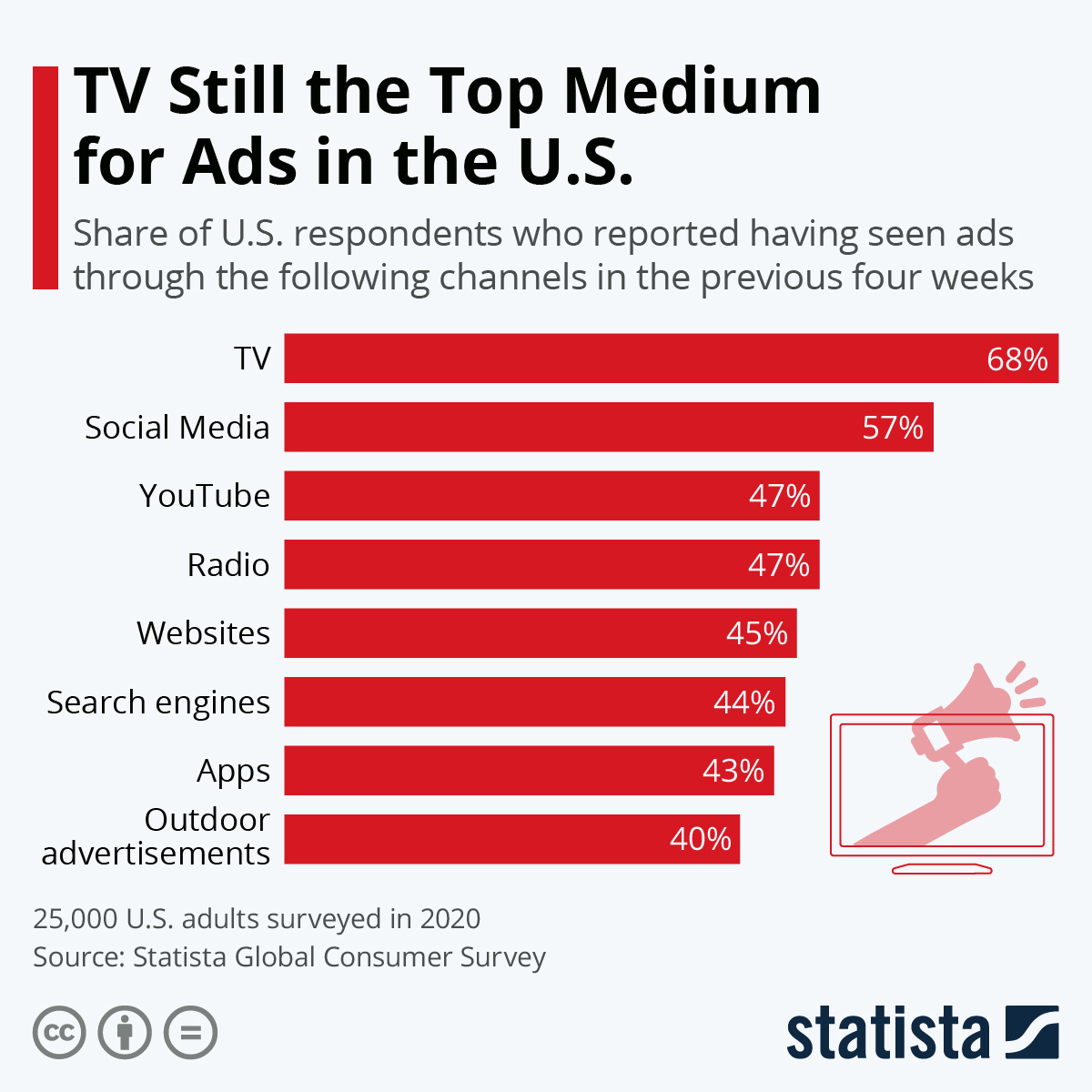
But one of the key challenges in offline marketing is attributing growth to specific campaigns.
There are no analytics platforms that can accurately track the impact of offline ads. So it’s difficult to determine what offline marketing efforts have worked.
Offline marketing can also be product-based. Take Coca-Cola’s “Share a Coke” campaign as an example.
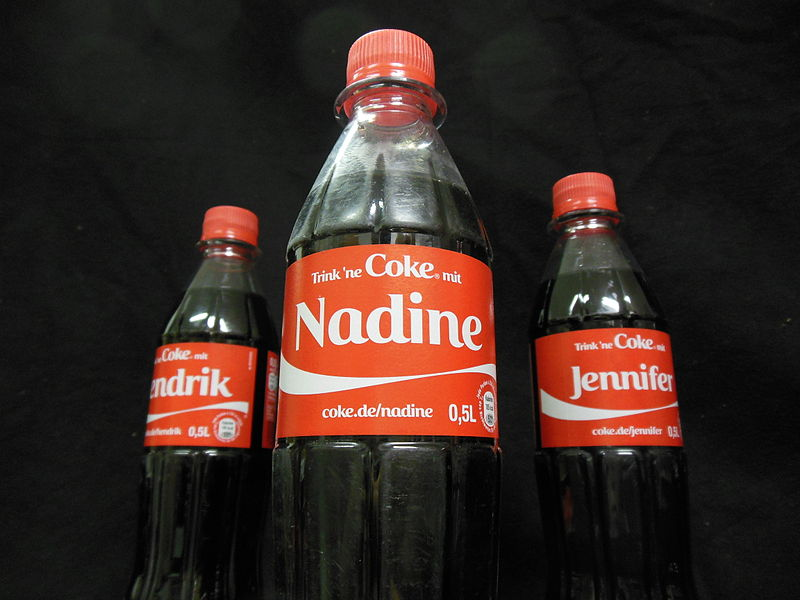
The strategy was as simple as printing new product labels with a variety of popular first names on them. But it was highly effective at generating press coverage and credited with increasing Coke sales for the first time in 11 years.
Offline Marketing Best Practices:
- Don’t be dismayed by the name “traditional marketing”—offline channels can still be highly effective
- Consider how you can link your offline strategies with online channels to create a fluid customer journey
- Determine how you can measure the impact of your offline marketing without digital analytics
Word-of-Mouth Marketing
Word-of-mouth marketing is a type of marketing that aims to encourage discussion about products or services.
A 2022 study by Nielsen backed up the potential value of word-of-mouth marketing strategies, finding that 89% of people trust personal recommendations more than any other channel.
Word-of-mouth marketing can take many forms. Loyalty programs, viral marketing, and product referral campaigns are all marketing activities designed to stimulate conversation.
For example, Meal-kit service Hello Fresh encourages word-of-mouth marketing by offering discounts for referrals. Existing customers can send “freebies” to friends so they can try the service at no charge. Or they can share a referral code that gives both parties a big discount.
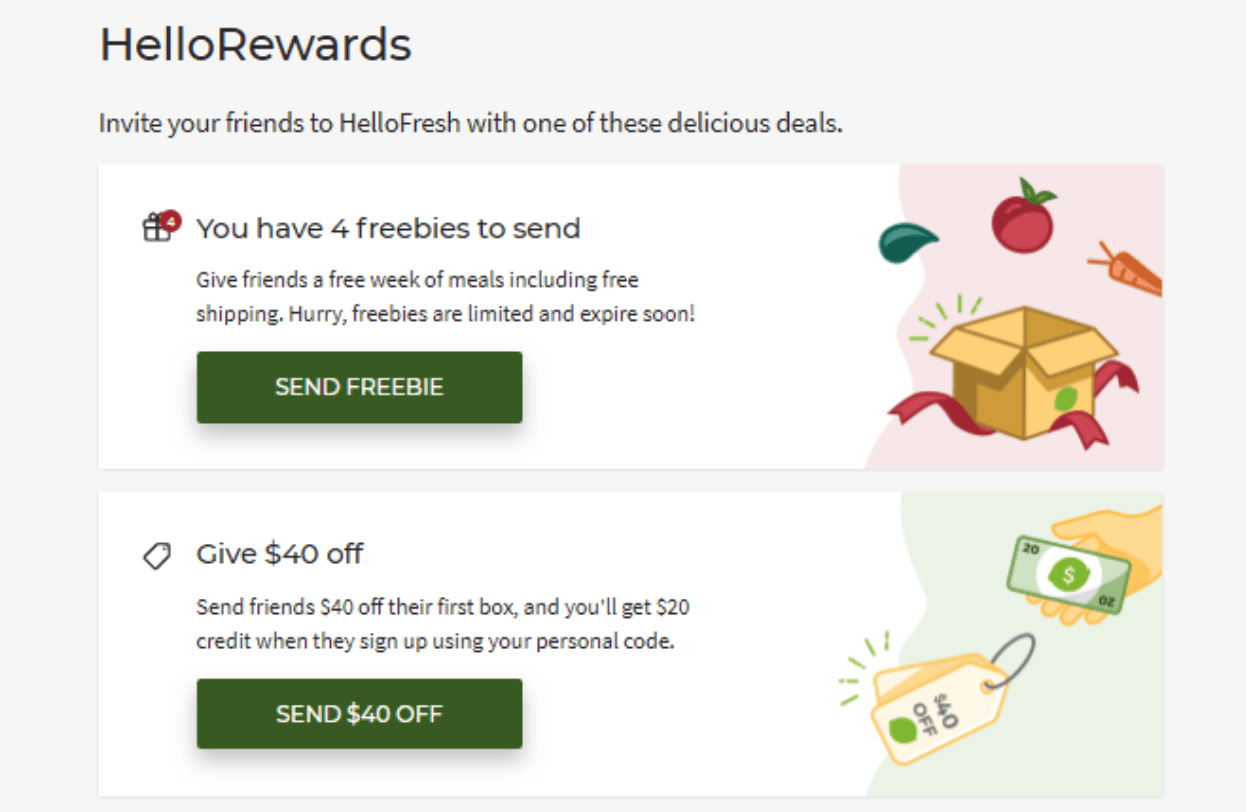
Word-of-Mouth Marketing Best Practices:
- Leverage brand and product positioning to stimulate conversation
- Choose appropriate KPIs for measuring the success of word-of-mouth marketing, like direct website visits
- Try to prompt word-of-mouth growth by increasing your brand exposure through other channels
Direct Marketing
Direct marketing involves communicating directly to a target audience Channels can include postal mail, email, and direct messages on social media platforms.
The direct nature of this type of marketing allows you to use highly personalized content. You can tailor messages to suit individual audience segments for increased impact.
This email from Ticketmaster is a good example of how you can use direct marketing to increase marketing relevance. It’s personalized to suit each recipient’s music taste.
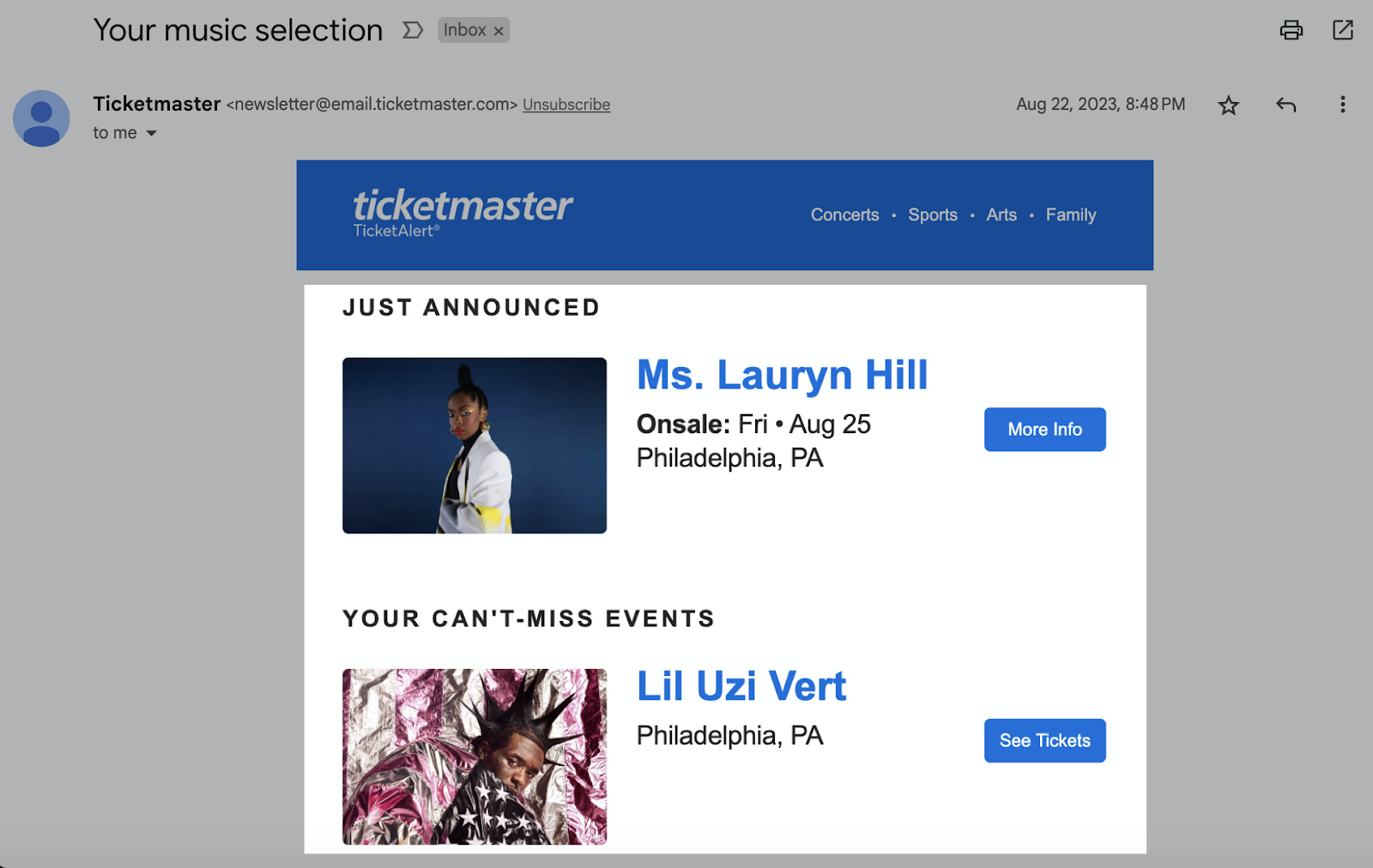
But there’s a lot of input required to deploy a direct marketing campaign. You have to collect contact information, segment your audience, and create tailored messaging for each segment.
Tools like Semrush’s One2Target help you see and analyze your target audience demographics, socioeconomics, and interests.
Start by entering your company name and major competitors into the tool. For this example, we’re comparing Amazon with competing retailers eBay and Walmart.

Click “Analyze.” You’ll get a report with options to see data on demographics, socioeconomics, behavior, and audience overlap.
In the “Demographics” tab, we can see that the main segment of this audience is men ages 25-34.
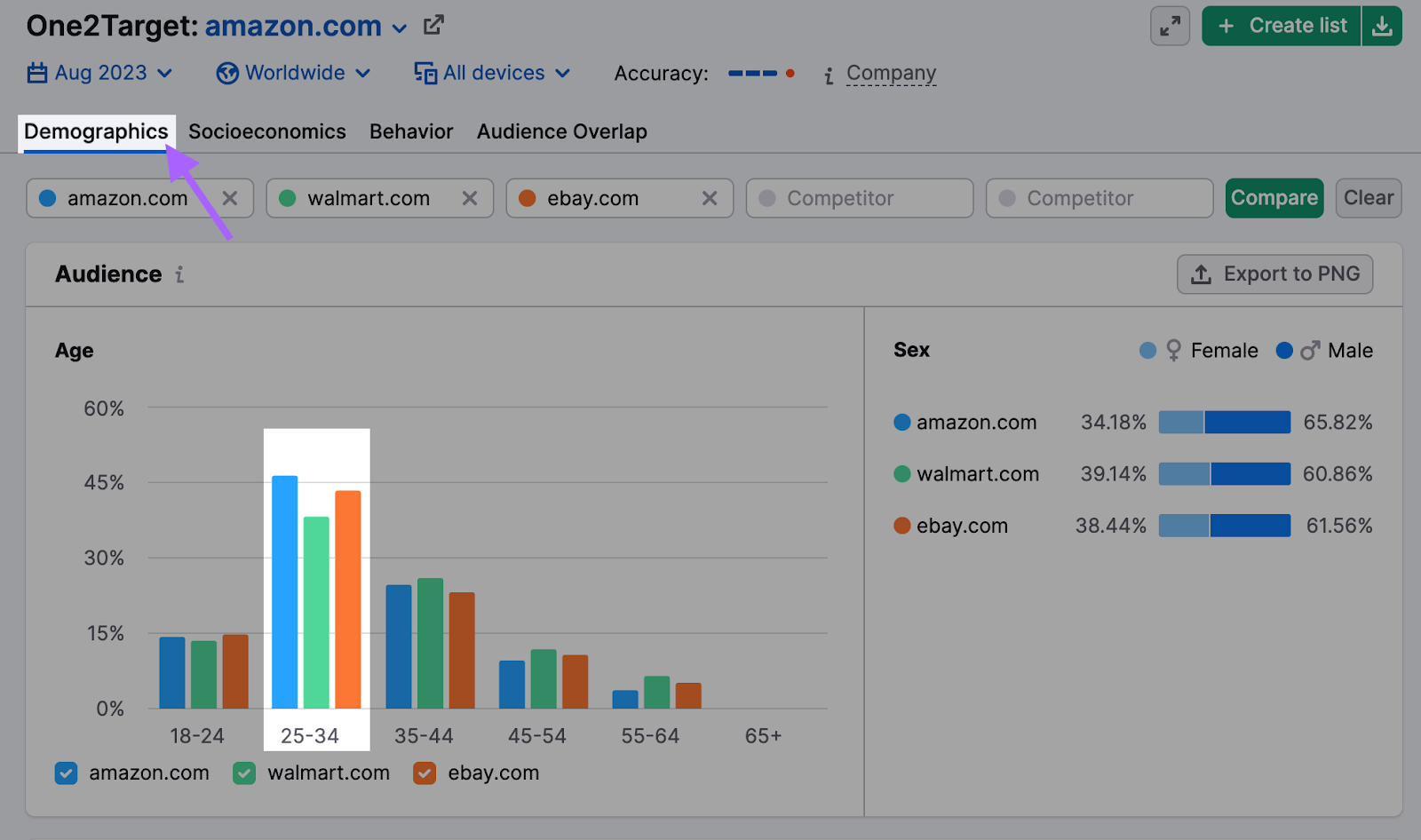
You can continue through each report to refine your segments and create clear target demographics within your audience.
Direct Marketing Best Practices:
- Segment your audience and use personalization techniques to increase resonance
- Use automation software to simplify online digital direct marketing efforts
- Try both digital and offline direct marketing to compare the results
Print Marketing
Print marketing is an offline strategy that involves the use of printed materials as a marketing channel. It encapsulates brochures, magazine ads, flyers, billboard ads, and more.
It’s the oldest form of marketing, but it’s still used by brands today. Times Square is full of both print and digital billboards, for example.

As with most types of offline marketing, it’s difficult to measure the impact of print marketing. Instead, it’s often used in campaigns designed for specific purposes like boosting brand awareness or targeting local audiences.
Print Marketing Best Practices:
- Use print marketing to complement your other marketing efforts
- Trial different print mediums, like brochures, flyers, and billboards, to see which has the biggest impact
- Focus on using print marketing to increase brand awareness, rather than drive sales
Event Marketing
Event marketing refers to using events to attract attention to a brand, product, or service. These events are typically held in person, but online events have become more common in recent years.
The key aims of event marketing are to create a memorable experience associated with your brand. It can also facilitate direct communication with your target audience.
Brands can host their own events, attend trade shows as exhibitors or speakers, or sponsor events for exposure.
Semrush’s recent Global Marketing Day was an online event. It attracted 87,000+ attendees and featured sessions from 150 experts.
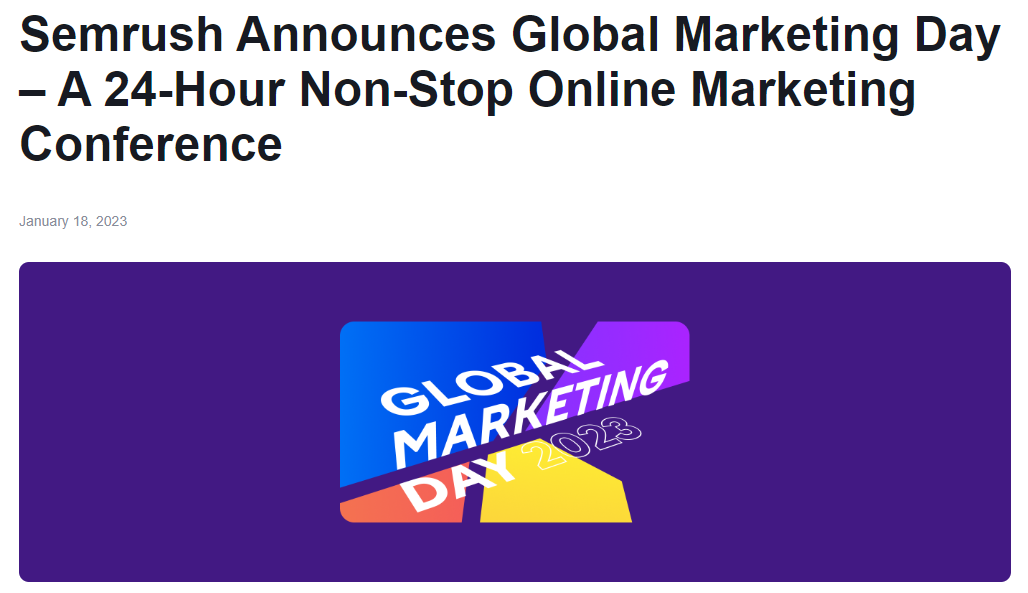
Event Marketing Best Practices:
- Think about whether hosting, attending, or speaking at events best suits your objectives
- Trial both online and in-person events to see which one works best for you
- Aim to create memorable experiences above anything else
Choose a Mix of Marketing Types to Create Your Perfect Campaign
All methods and types of marketing strategy have unique strengths and weaknesses. No single channel is without downsides. The best choice for your business depends on what you’re trying to achieve.
Whether your marketing goal is to build brand awareness or increase sales, there’s a combination of marketing categories that will work for you.
After you do a market analysis, you can make an educated decision on what marketing types make sense for your business. From there, you can generate creative, deploy your campaign, and start measuring results.
Sign up for a free Semrush account to get started.
Source link : Semrush.com
